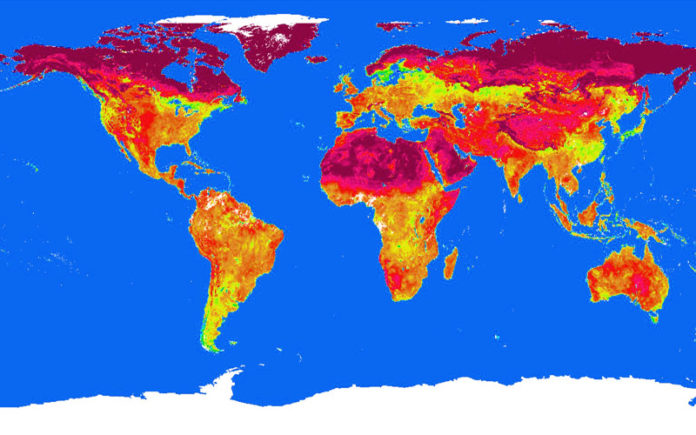Global warming is expected to increase heat stress in the workplace, affecting productivity equivalent to 80 million jobs. The poorest countries will be hardest hit.
According to a new report by the International Labor Organization (ILO), increased heat stress due to global warming is expected to lead to global productivity losses equivalent to 80 million full-time jobs by 2030.
Projections based on a global temperature rise of 1.5°C by the end of this century suggest that by 2030, 2.2% of all hours worked worldwide will be lost due to high temperatures. This corresponds to economic losses of $2.4 trillion worldwide. Moreover, the report warns that this is a conservative estimate because it assumes that the rise in global average temperature will not exceed 1.5°C. It also assumes that work in agriculture and construction - two of the sectors most affected by heat stress - will be carried out in the shade.
The ILO's new report, Working on a warmer planet: The impact of heat stresson labor productivity and decentwork, draws on climate, physiological and employment data to provide estimates of current and projected productivity losses at national, regional and global levels. Heat stress refers to heat in excess of what the body can tolerate without suffering physiological damage. It generally occurs at temperatures above 35°C, with high humidity.
Excessive heat in the workplace is a health hazard for workers, restricting physical functions and abilities, work capacity and therefore productivity. In extreme cases, it can even lead to heat stroke, which can be fatal.
The sector likely to be hardest hit worldwide is agriculture. The agricultural sector employs 940 million people worldwide. It is expected to account for 60% of working hours lost due to heat stress by 2030. The construction sector will also be heavily impacted, with an estimated 19% of working hours lost worldwide by the same date. Other sectors particularly at risk are environmental goods and services, waste collection, emergency services, repair work, transport, tourism, sport and certain types of industrial work.
The regions expected to lose the most working hours will be South Asia and West Africa, where approximately 5% of hours worked could be lost by 2030, corresponding to around 43 and 9 million jobs respectively.
What's more, it is the inhabitants of the most deprived regions who will suffer the greatest economic losses. Low-income and lower-middle-income countries are likely to suffer the most, especially as they have fewer resources available to adapt effectively to rising temperatures. Economic losses linked to heat stress will therefore add to existing economic handicaps, in particular high rates of working poverty, informal and vulnerable employment, subsistence farming, and lack of social protection.
Heat stress will affect millions of women, who make up the majority of the workforce in subsistence agriculture, and men, who predominate in the construction sector. Increased migration, as workers leave rural areas in search of a better future, could be one of the social consequences of heat stress.
The challenges posed by climate change are a central concern of the ILO's new Centenary Declaration on the Future of Work, and will guide its activities and research program. The report shows that the scale of the impact on the United Nations 2030 Agenda for Sustainable Development.
"The economic, social and health effects of heat stress will make it more difficult to combat poverty and promote human development and, consequently, to achieve most of the United Nations' Sustainable Development Goals (SDGs)." Catherine Saget, Head of Unit in the ILO Research Department and one of the main authors of the report
Employers and workers are in the best position to assess the risks and take the necessary measures in the workplace so that workers can cope with high temperatures and continue to do their jobs. Employers should provide drinking water and training in the detection and management of heat stress.
Social dialogue could prove useful in reaching a consensus on indoor and outdoor working arrangements, on adapting working hours, dress codes and equipment, on the use of new technologies, and on the provision of breaks to rest in the cool of the sun or in the shade.


